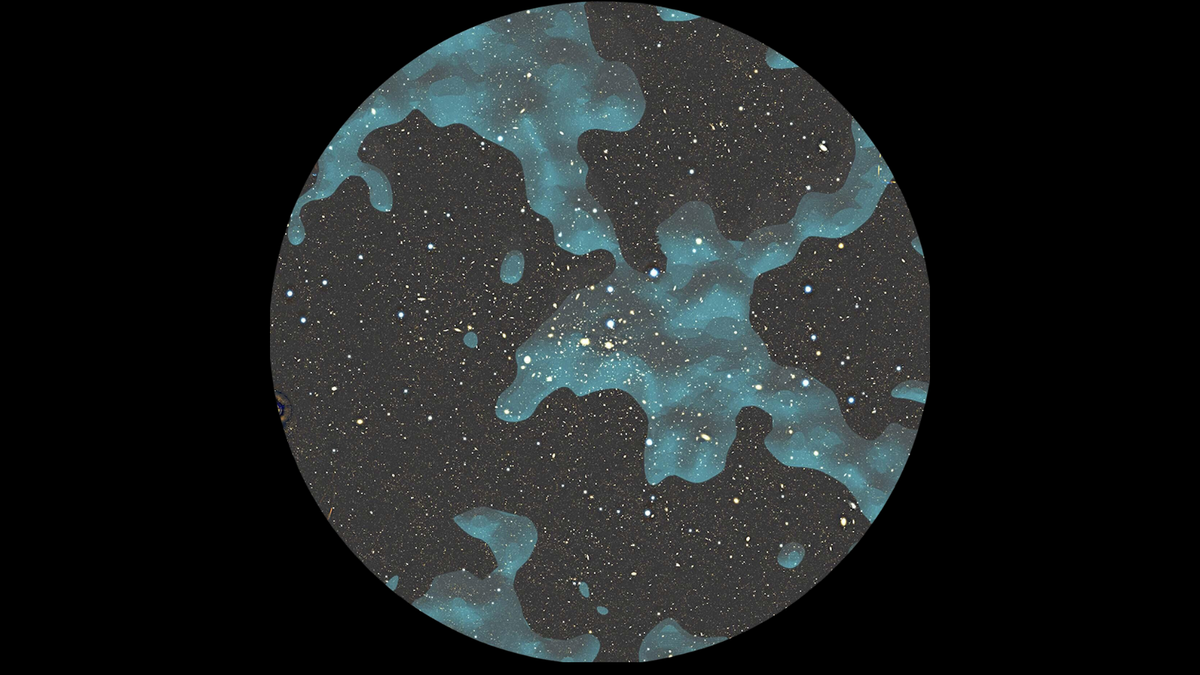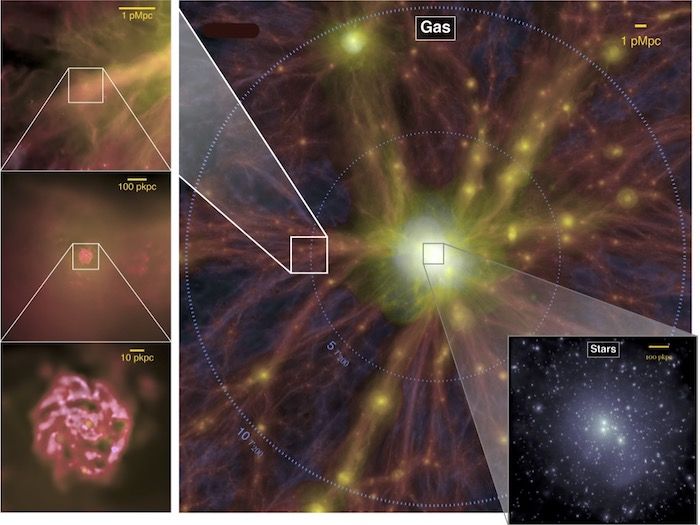Science
Related: About this forumDark matter detected dangling from the cosmic web for 1st time
By Robert Lea published 3 days ago
Dark matter, indirectly detected in a cluster of thousands of galaxies, could help scientists test theories of cosmic evolution.

Dark matter in the Coma Cluster. Dark matter represented by green clouds over the Coma Cluster and distant galaxies as seen by Subaru Telescope. (Image credit: HyeongHan et al)
For the first time, astronomers have detected dark matter hanging from massive filaments that stretch across the universe and form a "cosmic web" that trap galaxies like morning dew on a spiderweb.
Researchers from Yonsei University in Seoul, South Korea, used the Subaru Telescope — an 8.2-meter optical-infrared telescope near the summit of Maunakea in Hawaii — and an effect that gravity has on light to indirectly observe dark matter sitting on cosmic web filaments in the Coma Cluster.
This marks the first-ever detection of dark matter on the cosmic web, and could help confirm how this structure — with strands that run for tens of millions of light-years — has influenced the evolution of the universe.
Also known as Abell 1656, the Coma Cluster is a collection of over a thousand galaxies and is located some 321 million light-years away from us in the direction of the constellation Coma Berenices. Because of this tremendous size and relative proximity, the Coma Cluster is an ideal place for scientists to hunt dark matter on cosmic web strands.
The cosmic web is a network of filaments, made up of matter, that feed gas into galaxies, helping them grow. This web also helps channel galaxies together, leading them to cluster.
. . .

A computer simulation of galaxies embedded with filaments of gas that make up the cosmic web. (Image credit: Yannick Bahé)
More:
https://www.space.com/dark-matter-detected-cosmic-web-filaments-universe-evolution-subaru-telescope
GreenWave
(12,129 posts)Thank you!
Eko
(9,806 posts)"South Korea, used the Subaru Telescope" I pictured a Subaru outback sitting on a mountain with a large telescope on top of it and burst out laughing.
